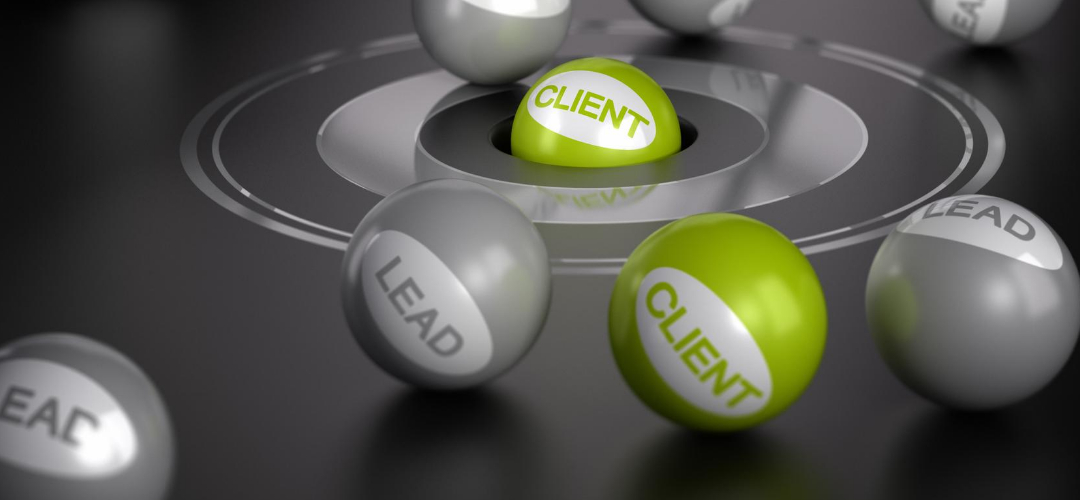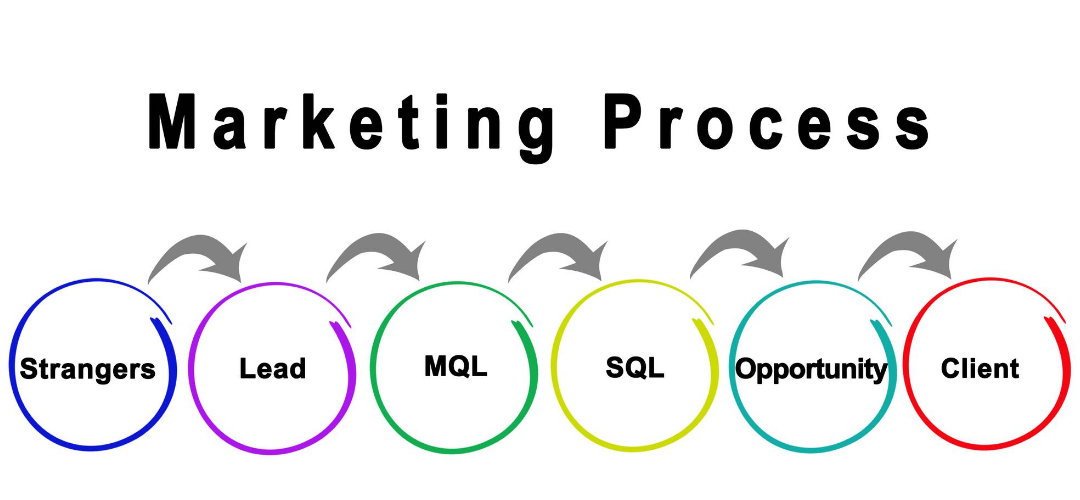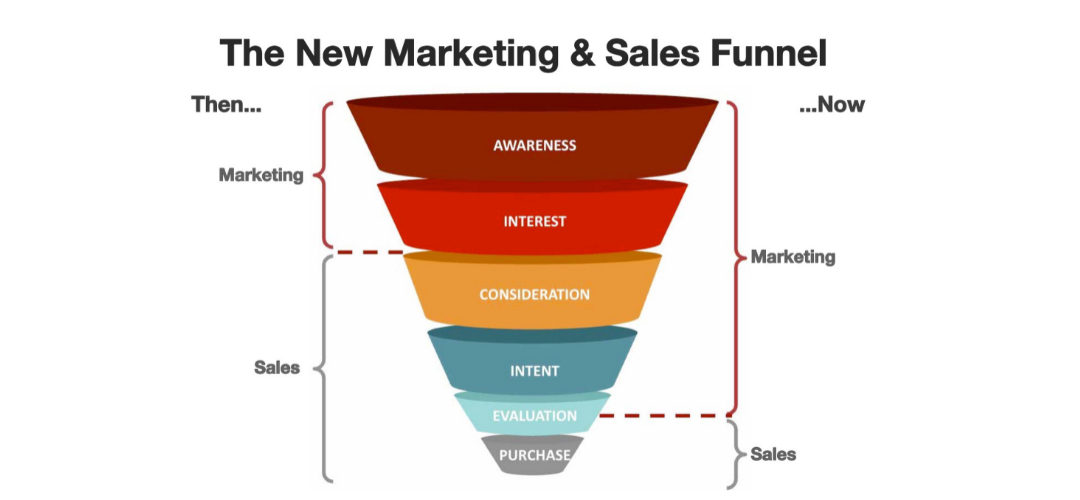Marketing qualified leads are needed for several reasons.
Inbound marketing has been around since the beginning of time. However, there was a time when people thought that MQLs were dead. They believed that SQLs would always be the only type of lead available.
However, today, we see that MQLs and SQLs are still very much alive and well.
What is MQL? Marketing Qualified Lead
MQL stands for Marketing Qualified Lead and speaks to the quality of different prospects. A qualified lead is someone who is ready to learn, have conversations, and at a certain time maybe convert into a paying customer. These leads may already be familiar with your product or service, or they could be completely new to you. Regardless of their familiarity, these leads are worth pursuing because they represent a chance to turn strangers into loyal customers. To qualify a lead, you need to understand what kind of person they are. How did they arrive at your website? Did they click on a banner ad? Or did they type in a URL? And once they arrived, did they see something compelling enough to keep reading? Once you know the answers to these questions, you can move forward with nurturing the lead until they’re ready to buy.

Why use MQL at all?
MQL leads are leads generated from organic search queries or generated by marketing campaigns. The reason why MQLs are such a big deal is that they tend to convert much better than non-qualified leads. This is because they’re already familiar with your product and service, and they’re ready to buy right now. So, if you’re able to capture them, you can sell to them immediately.
In addition to generating high-quality leads, MQLs also generate revenue faster than non-qualified leads, since they’re already engaged with your business. And unlike non-qualified leads, they’re willing to pay money for your products and services.
MQLs are generally identified as having a high probability of converting into a sale. A good example of an MQL is a prospect who signs up for a free trial of your product or service. Once he or she completes the trial, you can identify him or her as an MQL. Another example is a lead who fills out a form on your website. He or she may qualify as an MQL because you’ve already established contact with him or her. However, if the lead doesn’t fill out any additional forms, he or she isn’t necessarily an MQL. There are many ways to generate MQLs, such as email campaigns, landing pages, and ads. Some businesses rely heavily on MQLs to drive revenue, while others prefer to nurture prospects until they convert into sales. Regardless of your preference, you should always track your MQLs to see how they perform.
When the system works well, MQL’s can help both marketing and sales teams enjoy success together. With instant feedback from buyers, marketers know exactly which types of content their audience wants, and salespeople know which leads they’re going after.
So, if you’re struggling to generate sales, consider focusing on capturing MQLs. They’re worth the effort!
According to a recent survey, 91 percent of marketers say lead generation is their top priority.
SQL – Sales Qualified Lead
Sales qualified lead is a term used in the sales process. It means that you have identified and qualified a prospect who has expressed interest in your product or service. This is an important step because it allows you to move forward with a prospect. If you don’t qualify them, they will not be interested in buying from you.
These prospects may already be familiar with your brand, or they may be completely unfamiliar. Regardless of their familiarity with your brand, these individuals are ready to move forward with buying your product or service. A qualified lead is different from a nonqualified lead, however. Nonqualified leads are people who aren’t really interested in buying anything right now, or they’re not yet ready to commit to buying something. Qualified leads are ready to buy, and they’re actively seeking out your product or service.
A qualified lead is a lead that meets the minimum requirements set forth by the sales team. An unqualified lead is a lead that doesn’t meet the minimum requirements.

MQL vs. SQL: What’s the difference?
A marketing qualified lead (MQL) is someone who has shown interest in your product but hasn’t yet bought from you. A sales qualified lead (SQL) is someone who The main difference between micro-moments and macro-moments is where they occur within your sales funnel.
A qualified lead (MQL) has moved beyond the initial awareness stage and is now interested in hearing more from you. After going through the awareness and interest stages of the sales funnel, SQL has now reached the decision stage.
When consumers show an intent to buy, they become SQLs. An SQL might visit your product’s pricing page, add items to their shopping cart, or even buy something from you. They may have asked for a consultation with a sales representative. When a lead becomes a qualified lead, it’s time for sales reps to approach them again and get them to move into the next step of the customer journey.
Market Qualifiers (MQLs) have expressed an interest in buying your product or service but haven’t yet made a purchase decision. They’re more likely to have visited your site or downloaded a free e-book with information about your company’s products or industry. If that’s the case, then it’s time to start sending them more content and materials related to your products or services and how they can help them solve their problem. The idea is to keep them interested and engaged until they become a customer.
Lead Qualification Checklist.
Lead qualification checklists can be used to identify the ideal customer profile, as well as the ideal deal size. By knowing these things ahead of time, salespeople can adjust their approach accordingly. For example, if they realize that the majority of their prospects are small businesses, they may decide to focus on bigger deals. Or, if they discover that most of their prospects don’t qualify for their solutions, they may decide to change their offer to appeal to larger companies.
The best lead qualification checklists are designed to ensure that only the right prospects enter the sales process. They also help salespeople understand exactly why certain prospects aren’t ready to buy yet.
A good lead qualification checklist should include the following items:
- A clear understanding of the buyer’s pain point
- An accurate assessment of the buyers buying cycle• A list of qualifying criteria
- A plan for nurturing qualified leads
- A strategy for converting qualified leads into paying clients
- A plan for measuring success
Lead qualification checklists are critical tools for any sales team. Without them, salespeople would waste too much time chasing dead ends and missing out on real opportunities. In addition, without a proper lead qualification checklist, sales teams could miss out on valuable insights that would help them close deals faster.
Inbound marketing is a great way to generate leads and close sales. Here’s how to use it to drive qualified prospects down your marketing funnel.
How To Use Lead Qualification Checklists.
When using a lead qualification checklist, salespeople must first identify the prospect’s needs and problems before moving forward. Then, they must ask themselves two simple questions: “Is this person a fit for our solution?” and “Are we able to solve his problem?” Once those answers are determined, salespeople can move forward with the next steps in the sales process.
If you’re struggling to figure out where to begin, here are three tips to keep in mind:
- Start by identifying the prospect’s pain points.
- Ask yourself whether you can solve the prospect’s problems.
- Make sure you can deliver on your promises.

Lead Generation.
Lead generation is the process of finding leads for your business. These leads could be prospective clients, current customers, or any other type of contact that you’d like to convert into a sale. There are many ways to generate leads, but lead generation is the best method for generating qualified leads. Qualified leads are leads that meet certain criteria that you set beforehand. For example, you may only want to send emails to prospects whose email addresses end in.com,.net, or.org. Or maybe you only want to send emails during certain times of the week. Whatever the case, lead generation is the best way to ensure that you’re reaching the right people. Once you identify these leads, you can nurture them until they become customers.
According to a recent survey, 91 percent of marketers say lead generation is their top priority.
There are two major benefits to lead generation. First, it generates revenue for your business. Second, it improves the overall performance of your website. Let’s take a look at both of these points.
When you generate leads, you’re essentially creating a list of contacts that you can follow up with later. This is great because it lets you focus on growing your business without having to worry about selling to everyone. Instead, you can focus on nurturing those leads until they become customers. By focusing on lead generation, you can reduce the amount of time you spend trying to sell to leads that aren’t ready to buy yet.
Another benefit of lead generation is that it improves the performance of your website. When you generate leads, you can improve the number of visitors to your website by targeting the right audiences. This means that you can attract more visitors to your site, which increases the likelihood that they’ll convert into customers. In addition, lead generation helps you understand where your website needs improvement. If you don’t have enough leads coming in, you can see where your site isn’t converting as much as it could. This helps you figure out what changes you need to make to improve the performance of your site.
First, you need to identify the kind of audience you want to target. Do you want to target leads who live in a specific city? Maybe you want to target leads within a certain income bracket. Maybe you want to target people who have visited your website before. Whatever the case, you need to decide exactly who you want to target before you begin generating leads.
Once you’ve identified your ideal audience, you need to create content that targets them specifically. Create blogs, articles, videos, infographics, etc., that address issues relevant to your audience. Make sure that each piece of content focuses on one topic. Don’t try to cover too many topics in one article. Also, make sure that each piece of information is unique. If you write the same thing over and over again, nobody will read it.
How to use Inbound Marketing for your marketing funnel.
Inbound marketing is a great way to generate leads and close sales. Here’s how to use it to drive qualified prospects down your marketing funnel. First, identify the type of prospect you want to attract. Do you want to attract B2B buyers, or maybe B2C consumers? Once you figure out what kind of buyer you want to attract, you can design your marketing funnel accordingly. Next, set up your landing pages. Landing pages should include clear calls to action, like forms or buttons that let visitors sign up for your newsletter or download a free white paper. Make sure these calls to action are easy to spot and easy to click. Finally, write compelling copy for your landing pages. Don’t forget to add links to your website, too. These links are called call to actions, (CTA) and they tell visitors exactly what to do next. Now, once you’ve created your landing pages, you can start sending targeted emails. Start with email campaigns that focus on the needs of your ideal prospect. Send messages that address pain points, problems, or issues that your prospect may have. Include offers that solve those problems or offer solutions to those issues. And don’t forget to track your success! Set up analytics software to see where your leads are coming from, and how many conversions you’re getting. Then, take notes and tweak your strategy until you’re generating enough leads to fill your pipeline.
The importance of educational content.
Educational content is important to leads because it provides them with valuable knowledge that they can apply to their own lives. By educating your leads, you’re giving them something that they can take away from your website and use in their everyday life. Educating your leads shows that you care about them and their needs and that you understand their problems and concerns. Providing them with solutions to these problems and concerns is another great way to educate them. One of the best ways to educate your leads is by offering free resources like ebooks, whitepapers, webinars, etc. These resources give your leads something tangible that they can use immediately. And since they’re free, they’re much more likely to read and consume them.
Email Marketing.
Email marketing is one of the best ways to communicate with current and prospective customers. By sending emails regularly, you can nurture relationships with your customers and encourage them to return to your website.
You can also use email marketing to educate your customers about your products and services. For example, you can send them educational articles, tips, and tricks to improve their experience using your products and services. You can also use email marketing as part of your lead generation efforts. This is particularly effective if you’re targeting B2B clients since they typically prefer to receive emails rather than phone calls.
According to a recent study by HubSpot, 65% of B2B marketers’ leads come from referrals, 38% from email marketing, and 32% from SEO.
One of the biggest benefits of email marketing is its ability to deliver highly targeted messages. You can segment your list by demographics, interests, location, etc., allowing you to tailor each message to the individual recipient.
Manufacturing companies need to understand lead gen because it’s an integral part of any successful sales strategy. A lot of times, manufacturers try to sell their products without having a clear understanding of who their ideal customer is.
increase sales and grow
If you’re looking for ways to increase sales and grow your business, you should always be prioritizing lead generation and marketing qualified leads. These two areas will give you access to new customers and prospects, which means increased revenue and profits. But why exactly do you need to do this? Well, because without these two key components, you won’t have any leads to speak of. And when you don’t have leads, you can forget about growing your business. So, if you want to see results, you need to put lead generation first.
This process takes time, but it’s well worth it.
Jumpstart Your B2B Marketing Strategy
Up for a chat?
Let’s connect, talk goals, make some plans, and share some advice.
